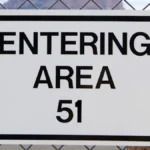
Hurricane Katrina was a category 5 hurricane that hit the United States state of Louisiana in late August 2005, causing more than $125 billion in damage and killing over 1,500 people. On August 23, Katrina formed as a tropical depression near the Bahamas and grew in strength as it crossed southern Florida and into the Gulf of Mexico. After becoming a category 5 hurricane, it weakened to a category 3 before making landfall on August 29 near Buras-Triumph, Louisiana. Despite Katrina’s high winds of more than 175 miles per hour, the majority of the damage and deaths in New Orleans were caused by extensive flooding after the protective levees failed.
More than 80% of the city was flooded, trapping thousands and/or leaving them without power. Many survivors sought refuge in the Superdome, but conditions were crowded, supplies were scarce, and criminals preyed on victims. In the absence of civil authority, looting and other crimes occurred, which was blamed on New Orleans Mayor Ray Nagin, Louisiana Governor Kathleen Blanco, and U.S. President George W. Bush has chastised them for their slow responses. Thousands of people were forced to relocate to cities such as Houston, Atlanta, and Memphis after being displaced and losing their homes.
The Ninth Ward district was especially hard hit because it was one of the main areas where the protective levee failed. It took place in a neighborhood called “Desire” in the Ninth Ward.
Despite the fact that government officials were chastised for their response to the hurricane, it is estimated that more than 80% of New Orleans residents were successfully evacuated before the storm hit.
During Hurricane Katrina, there were more than fifty breaches in the levee system in and around New Orleans, with a pump failure in the Lower Ninth Ward exacerbating the flooding.
Before the storm hit, one-third of the New Orleans Police Department fled the city.
Due to reports of civil unrest in New Orleans, Gretna police and the Jefferson Parish Sheriff’s Department barricaded the bridge that connects Gretna to New Orleans.
More than 200 suspected looters were detained by the National Guard at the local Greyhound terminal, which was unofficially dubbed “Camp Greyhound.”
The Army’s 82nd Airborne Division and the Coast Guard also aided in the rescue of those trapped in the flooded city.
Although Katrina wreaked the most havoc in Louisiana, she also wreaked havoc on the Mississippi coastline, causing more than $30 billion in damage and killing 238 people.
Biloxi, Mississippi was one of Mississippi’s hardest hit communities, first by the waves and then by the economic impact. Many of Biloxi’s casinos were destroyed, and the city’s beaches were nearly destroyed for months.
Katrina continued to rain on parts of the southeast for days after making landfall in Louisiana, causing thousands of power outages in Memphis, Tennessee.









